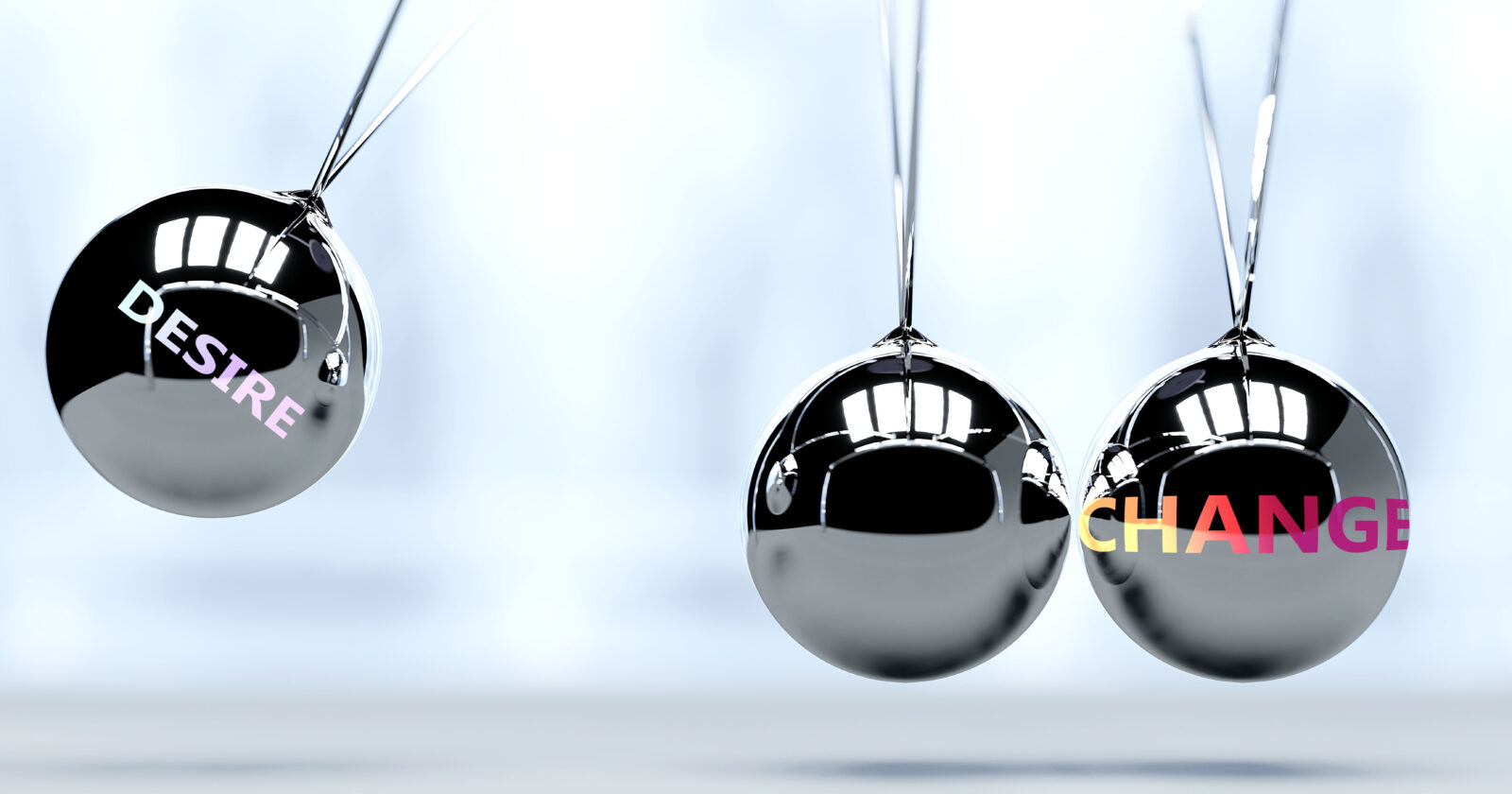By: Cindy Smith
“Your desire to change must be greater than your desire to stay the same.” — Author Unknown
What comes to mind when you think of the word desire? For me, desire is a strong feeling of wanting something or wishing for something to happen. For example, my desire is for my children to go to college, get an excellent education, and have joyful and meaningful lives. Even though I desire or want certain things for my children does not mean that my children desire or want the same things. I can foster the importance of a good education. I can lead by example. I can create savings accounts for their education. Even with all that, to earn that college education, my children need to desire it to make it happen. I can have a college education fund set aside with $100,000, but if my child decides they want to backpack across Europe for a year, what can I do?
When it comes to change, you often choose whether you want to accept and be a part of it, reject it, or make a compromise. Developing a desire for change can be a very complicated and personal experience. How do you get others to understand why you desire something? Providing others an understanding of why you want something is probably the easiest part. Fostering others’ desire to choose the same thing as you can be much more challenging; without the right approach, it can be nearly impossible.
Let’s take a more in-depth look into the desire for change.
In Proscis ADKAR (Awareness, Desire, Knowledge, Ability, and Reinforcement) change management model, desire is the second step in the process, and to many, the most difficult. An awareness of the proposed change does not mean that everyone desires to make the change. Inspiring teams to choose to be part of the change process can be a very arduous and often time-consuming process. Although we cannot make a team member want to change, we can do our best to understand their reasons for resisting change. Ultimately, they have a choice whether or not to buy into the change.
During my previous career as an Emergency Department (ED) Director, I was tasked with implementing electronic charting in the ED. For those of you who are unfamiliar, this was a somewhat painful process. Some of the comments from staff included, paper charting is so much quicker, especially in a fast-paced environment, not all staff are computer savvy, and what about downtime? All of these comments were valid. Based on their assessment, one had to ask if the current system worked; why change it?
I had complaints from the nurses and physicians. How in the world would I get them to buy into this change? It was not my decision to make this change, but it was my responsibility to ensure it happened. Not having a strong IT background, I needed to understand the need for this change. What improvements or benefits would come from this change? What negative impacts would happen if we didn’t make this change?
So I set out to learn all about Electronic Medical Records (EMR). I wanted to know what systems other healthcare facilities were using. What is all the fuss about HIMSS (Healthcare Information and Management Systems Society)? What are the benefits for me, the ED staff, and the patients? Once armed with this information, I held multiple staff meetings to discuss the how, why, when, and ‘what’s in it for me’. Providing an explanation and debating the pros and cons was very helpful. I reached out to several highly respected and engaged team members in the ED and asked them to be on the EMR implementation team. I needed them to be change champions for the program and teach and coach along the way. I knew that they would provide valuable feedback throughout planning that their involvement would ultimately make our project more successful.
It wasn’t easy, but involving others who had a vested interest in improving ED operations and patient care made our ultimate implementation successful. Did we have hiccups along the way? Absolutely!!! Many, many times, we went back to the drawing board. We incorporated feedback from nurses, techs, and physicians to refine the program. We made sure that everyone had a voice in the process, but that voice could not be “no.” The change was happening, and there was no turning back. If there was a problem, we empowered team members to bring the issue forward. But it was also an expectation that you would be part of finding a solution to that problem.
A lesson learned from experience implementing change with and without others’ input is that the process is so much easier and more likely to be successful with buy-in from key stakeholders.
“Every positive change – every jump to a higher level of energy and awareness – involves a rite of passage. Each time to ascend to a higher rung on the ladder of personal evolution, we must go through a period of discomfort, of initiation. I have never found an exception.” — Dan Millman
You might be wondering what the outcome was of my child going to college or exploring Europe. In the end, we decided on a compromise. Then COVID-19 happened. Again, change is always happening, everywhere, all the time. For now, my daughter is attending the University of Hawaii from home. She is excelling in her studies, and for now, travel is off the table. But with all her hard work and excellent grades, we have agreed that she will take a semester break and travel when it is safe to travel again. I am confident that her travels will provide her with many life lessons, adding to the college education she receives.

